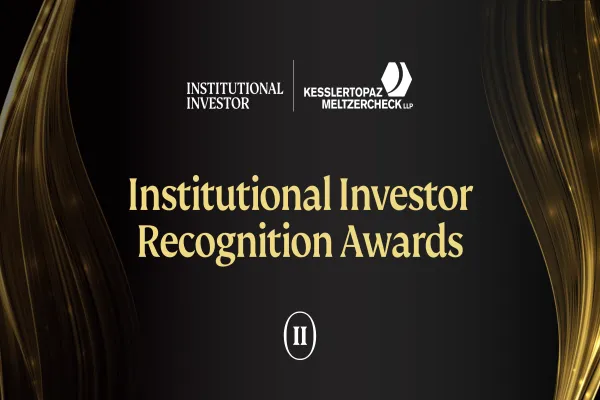Most of the great asset managers I know — especially among hedge funds, private equity funds and venture capital funds — tend to think of alignment of interests with limited partners as little more than the provision of eye-popping investment returns. In fact, many GPs invoke the returns they’ve delivered to universities, firefighters, teachers and police officers in justifying their business models and approach to fund relationships. But while we’d all agree that the prospect of delivering high returns to middle-class workers is exciting, it’s not alignment. I’d argue that establishing and negotiating a fund relationship on the basis of historical returns actually serves to distort incentives and misalign interests between GP and LP. Let me explain.
My baseline expectation, which I draw from empirical research, is that amazing managers that do actually create persistent value tend to capture the lion’s share of that value. Add to that the fact that past performance is not a reliable predictor of future performance, and LPs that agree to bad terms on the basis of past performance are undeniably putting themselves in a dangerous situation. Go ask that god of venture capital how his clean-tech bets played out. Or that hedge fund legend how his gold bet played out. The reality is this: Great fund managers aren’t great forever. So even when you’re dealing with the best managers in the world, alignment still matters.
As you might expect, I have lots of views on what a truly aligned fund looks like and have even been writing academically on the topic lately (here, here, here, here, here . . . you get the idea). In what follows, I provide a series of fund characteristics that I’d personally want to see from any GP that came to me asking for advice on its fund (which we both know is just code for “warm introductions to a sovereign fund”). Keep in mind when you read these factors that my alignment bar is very high, as I spend much of my life militantly defending the interests of asset owners from intermediaries of all kinds. Without further ado, here are my key alignment factors in order of the importance I personally ascribe to them:
#1: Skin in the Game: Nothing should make an LP feel better about a fund relationship than a large cash commitment by a GP to its own fund. In general, I’d say 5 percent cash — not deferred fees — in the fund is needed to move my eyebrows up a notch or two. Below that and I’d need some additional alignment indicators. For example, if a GP doesn’t have sufficient personal wealth to put up 5 percent, then I’d like to see 10 percent of a GP’s personal net worth going into the fund. Too high a bar, you say? Nah. Consider that I recently agreed to make some introductions for a venture GP that’s putting up 40 percent of a fund’s capital personally. Frankly, if a GP is willing to stake $100 million of a $250 million fund on the same terms as its LPs, I can’t help but feel I’m doing the LP a favor by making this introduction. There aren’t many GPs that have that kind of conviction in their fund and its strategy. I understand that too big a GP commitment can lead to some weird incentives, so you need to be careful that you’re not simply subsidizing some hedge fund manager’s family office. But aside from that outlier, large cash commitments by GPs far and away top my list of alignment factors.
#2: Mutual Dependence: True alignment means that a fund commitment is meaningful for both the LP and the GP. In other words, the size of the allocation being made by the LP should move the needle for the LP in terms of performance of the total fund. Asset owners that try to diversify funds, in my view, don’t really care about alignment of interests. Can an LP with 300 GP relationships ever hope to be anything more than a limited partner? On the GP side the allocation should be of a size sufficient that if the LP walks away, it’s truly painful. I like to see funds with a concentrated and engaged set of LPs, rather than hundreds of LPs asleep at the wheel. In practical terms I’d hope to see an LP asking for at least 10 percent of a fund’s total allocation and, ideally, upward of 25 percent. That’s mutual dependence and, I would argue, alignment. In this case I wouldn’t help an LP invest in a GP if it didn’t have the confidence to make serious commitments and demand the same from its counterparties.
#3: Time Share: For a GP to be aligned with the LP, the GP should be spending a large portion of its time on the fund. And to ensure this is the case, there should be some key man and no-fault provisions to ensure that the people and roles promised up front are maintained through the life of the fund. A GP should have clear guidelines for informing the LP of any possible conflicts and an obligation to inform on those conflicts. As we all know, some managers have other businesses or funds as well as all the extracurricular activities that come with significant wealth accumulation, such as politics. If these become a problem for the fund, there has to be a way to resolve them for the LP.
#4: Compensation: Fees have become a hot-button issue in the industry, largely because of their complexity and opacity. But achieving alignment in fee structures is actually pretty straightforward. In short, the bulk of a manager’s compensation should come from financial performance over a medium- to long-term time horizon. In other words, base fees should never be a profit center; they should keep the lights on and build the fund’s capabilities. There should also be 100 percent offsets for transaction or monitoring fees of any kind. Carry should be paid on the whole fund rather than deal by deal. Again, the substantive GP compensation should come from fund performance. All this says to me that a fund should be operated on a budget, with performance compensation structures that kick in only if real value is delivered to the LPs over time.
Alignment matters a great deal, but it’s increasingly rare in the alternative-investment sphere. To fix this, LPs need to aggressively pursue the kinds of factors I’ve listed. And to GPs, while I like your pictures of firefighters and teachers hanging from your walls, you can do a lot better. If you can deliver on the above criteria, you can hold your head high with the knowledge that you’re running a fair business. That’s alignment.






